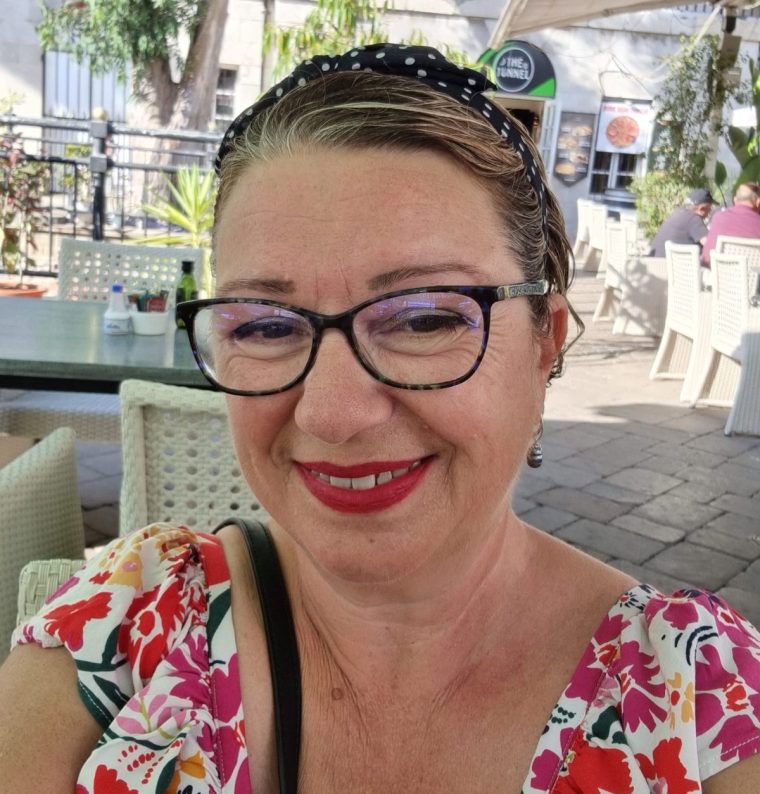Women are encouraged to regularly check their breasts for lumps or changes, but Britons are not in the habit of self-examining their vulvas, new research suggests.
Only 4 per cent of women regularly check down there for signs of cancer compared to 37 per cent who regularly check their breasts, according to a survey by gynaecological cancer charity The Eve Appeal.
The report also revealed 41 per cent of women say they’ve never heard of vulval cancer, of which there are over 1,400 new cases of each year in the UK – around four a day.
Jane Joy was one of them, until she was given the news she had it just over a year ago. “Despite being a midwife and seeing ladies’ bits every day, I didn’t realise you could get vulval cancer,” she told i. “People have told me that they’d never heard of the vulva. We’re just not well educated about this.”
The findings from The Eve Appeal also show that 79 per cent of women had never checked their vulva and among those who have heard of the disease before, almost half (48 per cent) have never self examined for it.
Jane was fairly young to get vulval cancer – just 53. It is most common after the age of 60, but it can occur at any age and is on the rise in younger people.
Since the early 90s, incidences in 25 to 49 year-olds have risen 67 per cent, and in 50 to 59 year-olds by 101 per cent. This is probably in part because of the rising incidence of HPV infection. Smoking is also a risk factor.

‘The GP said I was too young and it was nothing to worry about’
In Jane’s case, she first developed a painful skin condition called lichen sclerosus (LS) which causes itchy white patches on the genitals or other parts of the body. LS does not directly cause vulval cancer, but it increases the risk of it.
It is estimated that less than 5 per cent of women who develop vulval LS or a similar illness called lichen planus (LP) will go on to develop vulval cancer.
“I was very raw and fragile, it’s an extremely delicate area,” Jane, from Sandy, in Bedfordshire, told i. She said she was given steroid cream to manage the chronic disease.
Sign up for free text reminder service
For Gynaecological Cancer Awareness Month this month, The Eve Appeal has launched a monthly text service that women can sign up to for free to remind them to check ther vulvas for changes, along with a how-to-guide.
Athena Lamnisos, the charity’s CEO, said: “As a charity focused on prevention, we want to make checking for vulval changes as normal as checking for signs of other cancers.
“Vulval cancer is a tough diagnosis, often with life-changing consequences. Early diagnosis and, wherever possible, prevention is key.”
To can sign up, click here. The charity runs an expert, free and confidential information line called Ask Eve which is staffed by specialist nurses. If you have any worries about any vulval skin changes, email nurse@eveappeal.org.uk or call 0808 802 0019.
Prior to the LS diagnosis, the mother-of-three, now 55, never checked her vulva. She says was never told by a doctor about the link between LS and vulval cancer, but had educated herself about it.
So when she noticed a small bump that became raised, she knew she should seek medical attention. “The GP said I was too young and it was nothing to worry about,” she told i.
“They dismissed it, despite the fact I fell into two major risk categories – my skin condition and I’d had a hysterectomy at 38.”
Women who go through menopause before age 50 have a 50 per cent higher risk of developing vulval cancer later in life.
Jane’s cancer was caught only because a doctor colleague in the hospital where she worked agreed to take a look at her. She had a series of operations – four in total – to remove growths on her vulva.
Recovery was painful – feeling huge discomfort sitting and urinating – and Jane says her sex life now “doesn’t exist”.
“I’ve had my left labia removed,” she explained. “I’m very prone to tearing. My husband, we’ve been married 32 years, has been extremely understanding. Sex isn’t everything.”
‘I never checked myself down there’

Sandi White was also diagnosed with vulval cancer younger than most at age 52 in 2021. “I noticed some tiny tears – like papercuts – when I wiped after weeing,” she explained.
The mother-of-two, who is originally from Somerset and now lives in Spain, didn’t think it was anything serious, but when the area thickened, she sought help.
“The gynae asked if I’d been abused because I looked that scarred down there,” she said. Sandi, a project management director, then developed a growth on the entrance to her vagina like a “little cauliflower”.
When the disease was confirmed from a biopsy, her doctor told her it was likely caused by HPV – Sandi is at an age where she didn’t benefit from the vaccine. “I had to Google ‘vulval cancer’, I didn’t know anything about it and had never even heard of it.”
Sandi had surgery to remove the cancer and some lymph nodes for precaution along with a reconstruction. She struggled with extreme swelling in her legs – lymphedema – for months after. “My thighs had doubled in size,” she said.
She had been told it had been caught early. However, she has since discovered it had spread to her lungs and she’s had two more surgeries this year to remove it.
Sandi has now been told she needs to take a wait and see approach. “Remember to check yourself, know your normal and get any changes checked out,” she added.
How to check your vulva
The vulva is the outer part of the female genitals. It includes the soft tissue (lips) surrounding the vagina (labia minora and labia majora), the clitoris and the Bartholin’s glands (two pea-sized glands each side of the vagina that secrete fluid to enhance lubrication).
The Eve Appeal are encouraging everyone to check their vulva monthly, with a mirror and a light if needed.
Everyone’s vulva looks, feels and smells different. To identify symptoms of vulval cancer, it’s important for women to get to know what is normal for them.
That way, it’s easier to spot if any changes occur that could be a symptom.
The symptoms of vulval cancer are:
- A persistent vulval itch, pain or soreness around the vulva
- Thickened, raised, red, lighter or darker patches on the skin
- An open sore or growth visible on the skin
- A mole on the vulva that changes shape or colour
- A lump or swelling
Vulval cancer is sometimes misdiagnosed as an inflammatory skin condition – such as eczema or psoriasis – or even as a yeast infection, according to Yale Medicine. This leads to delayed treatment and may reduce survival rates.
Any changes need to be checked by a doctor or referred to a specialist.
Do you have a real life story? Email claudia.tanner@inews.co.uk.

